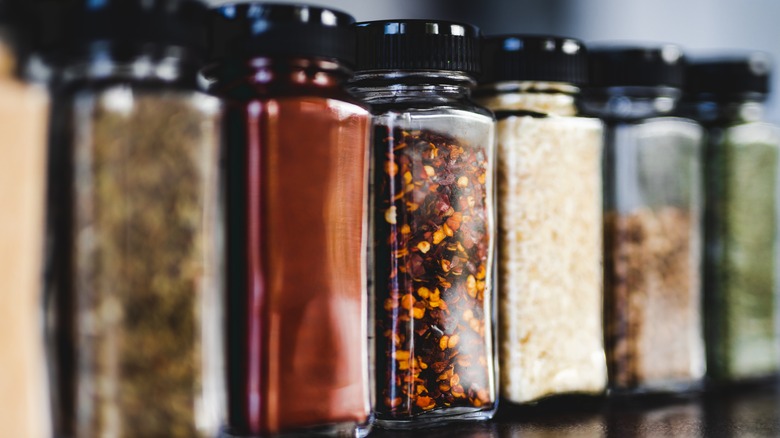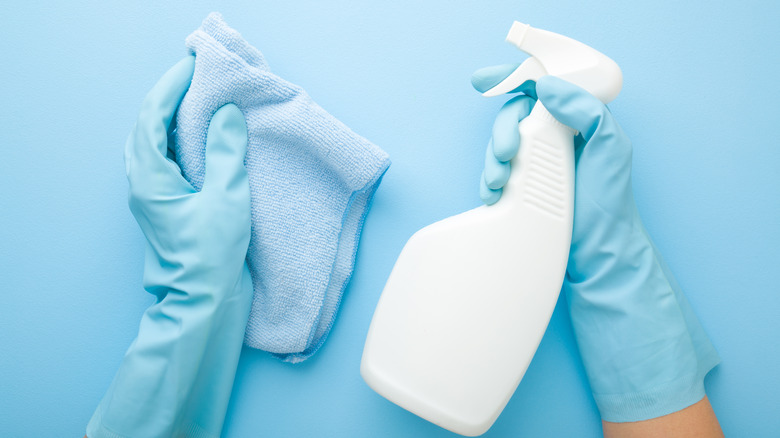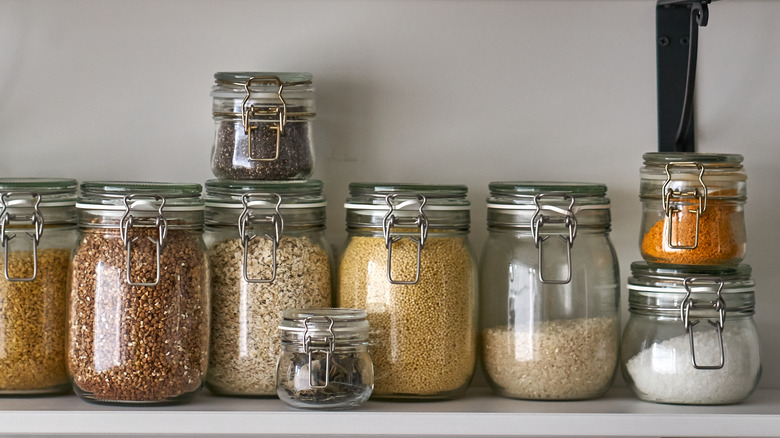Why You Need To Start Cleaning Your Spice Containers More Often
It's common knowledge that you need to be careful when handling raw meat in the kitchen. The Centers for Disease Control says that cross-contamination with food items poses a serious risk of spreading food-borne pathogens. To prevent the spread of these pathogens, it is important that foods are stored properly, and cooked to safe temperatures before consumption. In addition to this, it's extremely important to wash your hands, cooking tools, and any surfaces frequently while cooking.
The most dangerous pathogens can thrive fairly easily when surfaces aren't cleaned correctly. Fear of spreading these pathogens is the main reason why you should never wash uncooked chicken. Rinsing off your poultry before cooking tends to only spread these pathogens, and it will take a serious cleaning to rescue your sink from raw chicken juice afterward.
It can be exhausting doing so much cleaning in the middle of meal prep though. The Water Quality & Health Council claims that many Americans don't use the best sanitary practices. In fact, 26% of Americans admit to not washing their hands properly while preparing food. Even if you do follow the best practices for preparing food though, you still might miss cleaning some of the most dangerous surfaces.
Your spice containers aren't safe from contamination
Raw meat may often play the bad guy in many discussions about food health and safety, but that's only where the problem begins. A recent study published in the "Journal of Food Protection" found that while we focus on sinks, cutting boards, and kitchen tools we miss many of the other items that may become contaminated while handling raw meat.
To conduct this study researchers asked participants to prepare turkey burgers in their homes. They were unaware that the study would be analyzing their food safety precautions, and that the organism MS2 was infused with the ground turkey as a pathogen tracing method. According to Helvetica Health Care, MS2 is an indicator virus that can be used as a "virucidal efficacy screening tool." Afterward, many kitchen surfaces were analyzed to see which carried the largest traces of MS2.
Researchers found that the common household items which usually contained some of the highest levels of the tracing organism were actually spice containers. Participants either neglected to clean these surfaces or were mishandling their spices along with raw meat without cleaning their hands in between.
How to handle cross-contamination
The MS2 tracer study showed that 48% of the sampled spice containers had signs of cross-contamination. If that doesn't have you running to the pantry with soap in hand, we don't know what will. This finding led researchers to claim that spice containers may actually be a key vehicle for the spread of food-borne pathogens.
"In addition to more obvious surfaces like cutting boards, garbage can lids and refrigerator handles, here's something else that you need to pay attention to when you're trying to be clean and sanitary in your kitchen. Our research shows that any spice container you touch when you're preparing raw meat might get cross-contaminated," said Donald Schaffner. Schaffner, the lead researcher on the study, is Rutgers Agricultural Experiment Station's Extension Specialist in Food Science and Professor in the Department of Food Science at the Rutgers School of Environmental and Biological Science, per Food Safety News.
Whether you've gone the extra mile to decant your spices, or still have them in the original jars, it might be a good idea to give them a thorough cleaning. You can be extra cautious and prep your spice mixes before you start handling raw meat as well. Still, you probably don't need to bust out your hazmat suit the next time you make chili. As The Washington Post points out, "many pathogens become less potent on surfaces" according to Benjamin Chapman, another author of the study.


